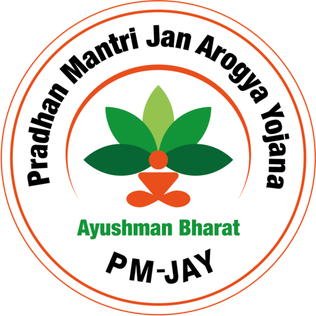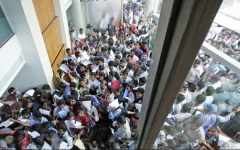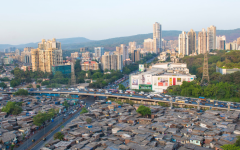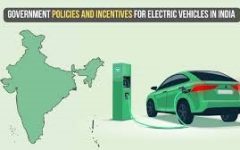AYUSHMAN BHARAT
January 27, 2025 2025-01-27 9:36AYUSHMAN BHARAT

AYUSHMAN BHARAT
Ayushman Bharat is India’s publicly funded health insurance scheme which was launched by the Government of India in September 2018. This scheme aimed to revolutionize the healthcare sector in India. The scheme provides ‘Universal Health Coverage’ to vulnerable sections of the Indian society by reducing the massive out-of-pocket expenditure which is undertaken by the poorest in the society to avail health care services in the country.
The primary aim is to provide equitable and affordable healthcare to all. The scheme has two components: first, establishment of health and wellness centers (HWCs) which aim at providing primary care- encompasses outpatient care, diagnostic services and prescribing the required essential drugs. The second component is the Pradhan Mantri Jan Arogya Yojana (ABPMJAY). It aims to provide cashless cover up to 5 lakh rupees for secondary and tertiary care hospitalizations in both government and private empanelled hospitals. The scheme covers around 1300 procedures. This reduces the out-of-pocket expenditure endured by families. The ABPMJAY replaced the Rashtriya Swasthya Bima Yojna (RSBY), which did not account for providing primary healthcare services and their coverage and solely focused on secondary care hospitalization. ABPMJAY which is the insurance component targets families falling below the poverty line (targets the bottom 40% of the Indian population which majorly resides in rural areas where people have difficulty in accessing and availing basic healthcare services).
On its face value, Ayushman Bharat seems like a well thought out policy. However, it is important to critically analyse the design flaws in the policy, which prevent the policy from achieving the desired goals and objectives. The data available in the Beneficiary Identification System (BIS) is not up to date. The last Census was conducted in 2011. There have been no recent updates to the data. Families are not able to avail the benefits of the scheme as the government has not made a point to update the data and collect fresh data. This renders the data obsolete. There are some cases where there is a presence of ineligible beneficiaries who might reduce resources and services for those who actually need it.
In a performance audit conducted by the Comptroller and Auditor General of India (CAG), it was found that there have been issues around discrepancies in hospital empanelment. Hospitals lacking adequate infrastructure and having shortage of medical personnel have been empanelled on the PMJAY scheme. Compliance criteria for these empanelled hospitals has not been met. There have also been reports that the empanelled hospitals have been inactive since the time they were empanelled.
The health and wellness centres (HWCs) are not enough in number. There is a percentage shortfall is as high as 80% in some states. A considerable inter-state disparity exists in the quality of the infrastructure of such health centres and the care offered in them, with the well-governed states performing much better than the rest.
More than 50% of patients from poorer districts go to well-off districts to avail tertiary care. Majority of the government specialized hospitals are located in major cities, making the inequalities in access to quality tertiary health care worse.
Some chronically ill people have reported that they are being denied treatment (despite having valid documents) as their illness does not feature in the list of illnesses which are covered under ABPMJAY. This design flaw does not make the scheme accessible to hundreds of such people whose illness does not feature in the list of treatments covered.
The biggest design flaw in ABPMJAY is that it does not cover outpatient services. With outpatient treatment not being covered, people do not have coverage for the medicines purchased by them frequently. Medicine costs are high and with frequent purchases to cure a chronic disease, it could lead to massive out-of-pocket expenditure, thereby pushing people into poverty. Expensive, inpatient, secondary and tertiary health care services are prioritized by the scheme over cost-effective primary health care services which would tend to the needs of a larger population and help in preventing the disease or medical condition from increasing in the future, by providing timely access to primary health care services.
The scheme should not be made optional for states. States like West Bengal and Delhi have chosen not to be part of ABPMJAY. There should be one single scheme which applies to all. This would lead to uniformity in terms of infrastructural development and healthcare services.
There have been growing reports that private hospitals are pulling back from the scheme amid low state funding. Private hospitals are not getting reimbursements from the Government. These hospitals are not admitting patients, especially those who require expensive surgeries because of delay in reimbursements. This will leave people with less choice and difficulty in availing the right medical treatment.
To conclude, the Ayushman Bharat scheme is a stepping stone in the right direction to provide access to health care services, especially to those who do not have the financial resources to avail treatment. goal is to reduce financial burden and provide access to healthcare services to all.
References:
- https://factly.in/review-cag-highlights-multiple-discrepancies-in-ayushman-bharat-pradhan-mantri-jan-arogya-yojana-makes-recommendations/
- https://nha.gov.in/PM-JAY
- https://www.livemint.com/industry/private-hospitals-pull-back-on-ayushman-bharat-amid-low-state-funding-11715151502802.html
- Grewal, H., Sharma, P., Dhillon, G., Munjal, R. S., Verma, R. K., & Kashyap, R. (2023). Universal Health Care System in India: An In-Depth Examination of the Ayushman Bharat Initiative. Cureus, 15(6), e40733. https://doi.org/10.7759/cureus.40733
- Kamath, R., & Brand, H. (2023). A Critical Analysis of the World’s Largest Publicly Funded Health Insurance Program: India’s Ayushman Bharat. International journal of preventive medicine, 14, 20. https://doi.org/10.4103/ijpvm.ijpvm_39_22






